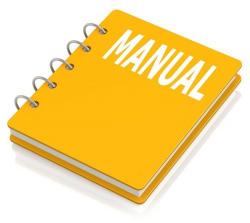Ford Transit 1978-2016 Workshop Repair & Service Manual
Catalog:
Model:
Complete digital official shop manual contains service, maintenance, and troubleshooting information for the Ford Transit 1978-2016. Diagnostic and repair procedures are covered in great detail to repair, maintain, rebuild, refurbish or restore your vehicle like a professional mechanic in local service/repair workshop. This cost-effective quality manual is 100% complete and intact as should be without any missing pages. It is the same factory shop manual used by dealers that guaranteed to be fully functional to save your precious time.
This manual for Ford Transit 1978-2016 is divided into different sections. Each section covers a specific component or system and, in addition to the standard service procedures, includes disassembling, inspecting, and assembling instructions. A table of contents is placed at the beginning of each section. Pages are easily found by category, and each page is expandable for great detail. It is in the cross-platform PDF document format so that it works like a charm on all kinds of devices. You do not need to be skilled with a computer to use the manual.
NOTE: Mark II manual is in PDF format; Mark III, IV, V manuals are in DVD iso image format.
EXCERPT:
GENERAL DESCRIPTION (cont'd)
The exhaust system on the Transit range consists of a series of exhaust sections assembled by means of sleeved joints secured by "U" bolt clamps, Fig. 3. For each of the three engine types, in-line 4 cylinder OHV (Kent), in-line 4 cylinder OHC and Yorks Diesel, a basic system can be adopted for the large range of vehicle sizes and variants in the Transit range.
The exhaust system is suspended at three locations, excluding the exhaust manifold, by rubber insulators, Fig. 4, support straps, Fig. 5, or bracket clamps
All systems employ a single down pipe between the exhaust manifold and the front muffler. This down pipe will vary in design according to the type of engine fitted . The down pipe on OHV (Kent) and Diesel (York) variants is secured to the left hand side of the engine whereas on OHC variants it is secured to the right hand side. The down pipe is secured to the exhaust manifold by means of a flange clamp and two nuts, with a sealing ring between pipe and manifold on petrol variants only.
All Transit exhaust systems have two mufflers. The front exhaust section, for Kent and York variants only, incorporates both mufflers whereas on OHC variants there is one muffler in the front section and one in the rear.
The rear section, which includes the tail pipe, joins the front section forward of the back axle. There are a number of different rear sections to accommodate the three tail pipe positions, throughout the engine and body ranges.
In service front and rear mufflers are available individually without the additional pipework for their sections. Service replacement mufflers have special end pipes of sufficient length to enable more than one replacement to be carried out without renewing the associated pipes. These mufflers are fitted into the exhaust system using connector sleeves and "U" bolt clamps. It is important to follow replacement procedures carefully to obtain maximum utilization and life of all pipes.
...





